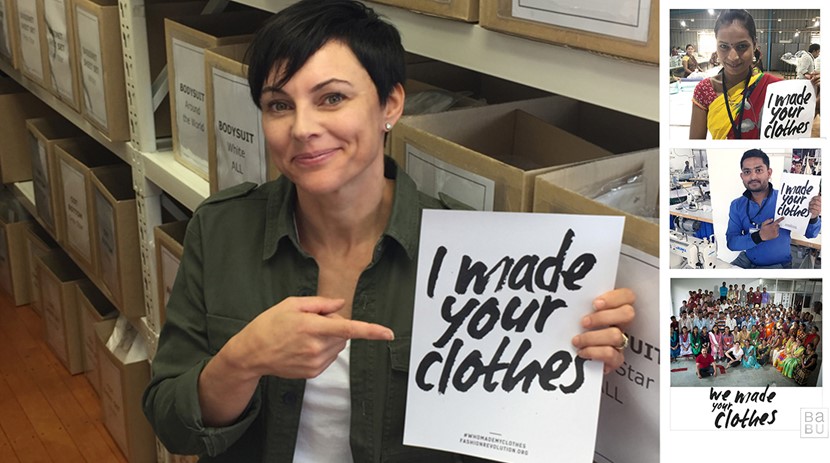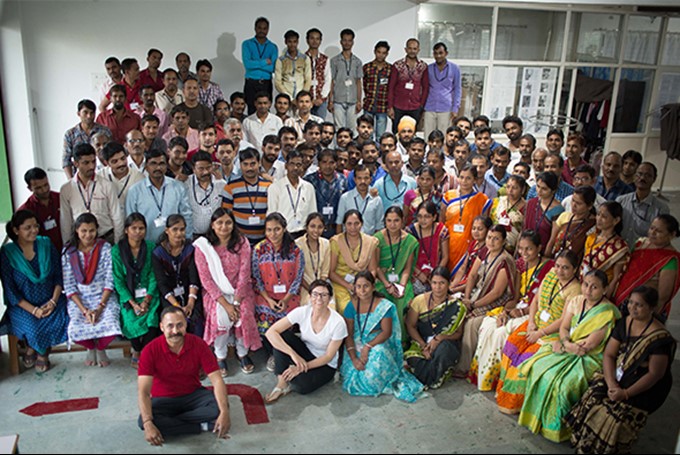Baby brand wants you to ask, who made these clothes?

A Kiwi babywear brand says embracing The Fashion Revolution is paying off in ways they’d never dreamed.
Ali Hui, the founder and managing director of upmarket babywear brand Babu, says the ethical movement, which encourages companies to show they have good working conditions for their staff, has filtered down to other parts of her business and her own personal life.
Babu’s website now has a ‘repair, reuse, rehome’ section where customers can sign up to send in used Babu items that need repairing. Babu staff take the items home to mend, then organise either to send them back to the customer, or re-home them. Hui gladly foots the courier bills.
“Yes, it goes against the grain and is counter-productive to making sales, but you just can’t think of it that way.”
Hui says she now finds society's throwaway attitude toward clothes "abhorrent", and buys very little clothing, instead wearing a "uniform" of black pants and white shirts to work.
The movement has been promoted by various companies on social media using photos of factory workers holding a sign with the hashtag #imadeyourclothes.
Her motivation for getting behind the movement is simple: "I don't want to produce anything that other people may have to pay for, physically or emotionally. If a customer asks about the conditions [Babu] clothes were made under, we're happy to tell them. In fact we'd love them to ask!"
Babu has employed the same central India manufacturer for the past 13 years, and when Hui visits the factory, she becomes part of “the family”, happily rolling up her sleeves to pick cotton, help on the packing floor, as well as tasks like ironing and pressing on studs.
As for the manufacturer, known as Mr Akhilesh, “I can’t fault him. We know 100% that his staff are treated well,” she says.

Mr Akalesh brings organic milk and vegetables from his own farm for his 126 staff, and workers without transport are picked up and dropped off each day. He also works with the local fashion colleges and the local farmers’ collective, and runs his own water and waste recycling plant. Hui says all his staff are paid the living wage, and have to consent to doing overtime. Importantly, there’s no lockdown policy, where the factory doors are locked and staff aren’t allowed out until a particular order has been finished.
What is The Fashion Revolution?
The Fashion Revolution believes that the whole fashion industry needs a radical paradigm shift and that the way that we produce and consume clothes needs to be transformed. This means new business models.
The movement was prompted by the horrific events of 24 April 2013, when 1138 people died as the Rana Plaza building in Bangladesh collapsed. Another 2,500 were injured, making it the fourth largest industrial disaster in history.
There were five garment factories in Rana Plaza, all manufacturing clothing for big global brands. The victims were mostly young women.
Our clothes have gone on a long journey before they hit store shelves, passing through the hands of cotton farmers, spinners, weavers, dyers, sewers and others. About 75 million people work to make our clothes, and 80% of them are women between the ages of 18 and 35*.
However, the majority of the people who makes clothes for the global market live in poverty, unable to afford life’s basic necessities. Many are subject to exploitation; verbal and physical abuse, working in unsafe and dirty conditions, with very little pay.
Some sobering statistics*
- As a society we purchase 400% more clothing today than we did just 20 years ago.
- 150 billion items of clothing are delivered out of factories annually yet Americans alone throw away approximately 14 million tonnes of garments each year, that’s over 36 kg per person.
- According to the Environmental Protection Agency (EPA), 84% of unwanted clothes in the United States in 2012 went into either a landfill or an incinerator.
- The chemicals used to grow, dye, launder and treat our clothes end up polluting rivers. A huge amount of water is used to produce garments through growing cotton and through wet processing, such as dyeing and laundering.
- Clothing accounts for around 3% of global production of CO2 emissions, according to The Carbon Trust.
Find out more about The Fashion Revolution
Read the 2017 Tearfund Ethical Fashion Report
* Source: thefashionrevolution.org
IMAGES /babu.co.nz

